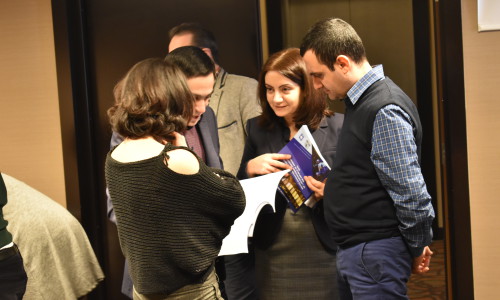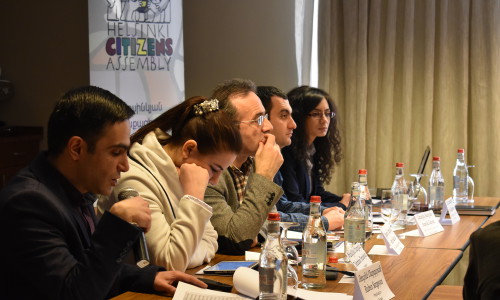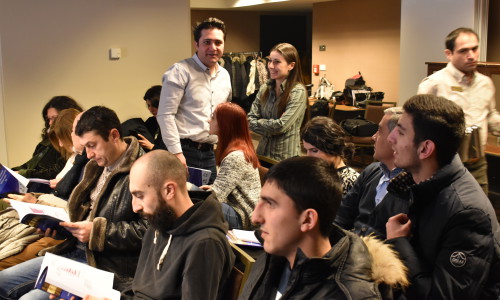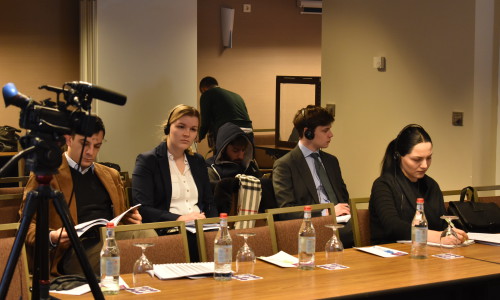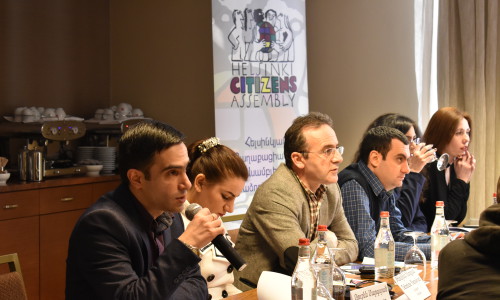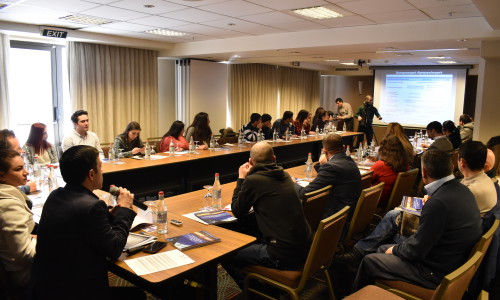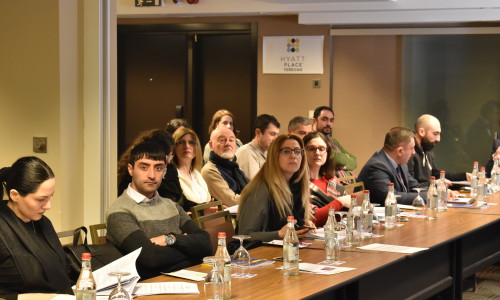Level of police arbitrariness towards citizens rose
15:32, February 23, 2017 | Discussions, News, Own news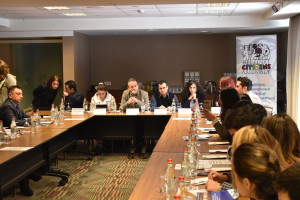 On February 21, 2017, HCA Vanadzor held a discussion on ‘Situation of Human Rights Violations in Police-Citizen Relations in 2016’.
On February 21, 2017, HCA Vanadzor held a discussion on ‘Situation of Human Rights Violations in Police-Citizen Relations in 2016’.
The discussion brought together representatives of competent government agencies, international organizations, embassies, foundations and local NGOs.
In his opening speech, Artur Sakunts, Chairman of HCA Vanadzor, outlined the objective of the discussion. He noted that HCA Vanadzor used various tools to examine the situation of human rights violations in police-citizen relations; such tools include the law enforcement arbitrariness and trust indices, mass media publications and analysis of the presented facts and the data of the complaints submitted to the Organization. Then he emphasized, “We establish facts and based on their analysis present our concerns and demands to the police and authorities.”
Sociologist Ruben Sargsyan presented the survey on the indices characterizing the RA law enforcement activity. It was already the 2nd similar survey carried out throughout RA. A comparative analysis of the findings of 2015 and 2016 was presented.
According to the respondents, in 2016 the law enforcement arbitrariness index decreased by 7 points, as compared to that of 2015.
By marzes (regions), the law enforcement arbitrariness index decreased to a greater extent (i.e. the level of police arbitrariness towards citizens increased) in the marzes of Lori, Armavir and Ararat and increased (i.e. the level of police arbitrariness decreased) in the marzes of Syunik and Tavush.
R. Sargsyan also presented the general characteristics of the group most vulnerable to the arbitrariness of the law enforcement bodies. According to the findings of the 2016 survey, the persons most vulnerable to the law enforcement arbitrariness are the representatives of male residents of urban communities aged 36-60 with post-graduate education perceiving themselves as socially disadvantaged.
As compared to the findings of 2015, the picture differs only in the features of age (over 55 years) and education (incomplete higher, higher and post-graduate /academic degree/).
According to the expert, in 2016, the level of citizens’ perception of the authorities using the police as a measure against their political opponents rose.
Another noteworthy finding was that the law enforcement bodies showed discrimination against citizens by their social security status; the law enforcement officers fulfilled their obligations in better faith towards the representatives of the economically secure social sector.
As for the police trust index, while it is in the positive range, it also decreased as compared to that of 2015.
Sara Ghazaryan, Program Assistant at HCA Vanadzor, gave a brief outline of the human rights violations by the police in 2016 based on the mass media publications. According to that study, in 2016 the total rate of human rights violations increased, as compared to that in 2015. Both in 2015, and in 2016 the most violated rights covered as follows: right to freedom of assembly, right to liberty and security of person and right to be free of physical violence. According to the rate of violations, the top 10 still cover the freedom of movement, freedom of expression and the right to legal aid. Also, she presented the rate of violations by the types of human rights and incidents; accordingly, in 2016, 22 types of human rights were violated instead of the 18 violations in 2015 and the number of incidents leading to human rights violations rose by 10%.
According to HCA Vanadzor lawyers Arayik Zalyan and Ani Chatinyan, under none of the 40 crime reports on the police illegal actions and unlawful conduct submitted by the Organization in 2014-2016, no one was identified and punished adequately. At best, disciplinary penalty in form of reprimand was applied.
They drew attention to the recent policy of the RA Special Investigation Service sending the reports on the police illegal actions to the Internal Security Department of the Police; such practices do not result in adequate punishment.
The discussion was closed with screening of a video report entitled ‘Unpunished Crime’ by journalist Tehmine Yenokyan giving a brief outline of how the police infringed on the citizens’ rights in 2016.
See also Annual Report on Human Rights Violations by the Police (in Armenian)
Indices Characterizing Actions of Law Enforcement Agencies in The Republic of Armenia (2016)



